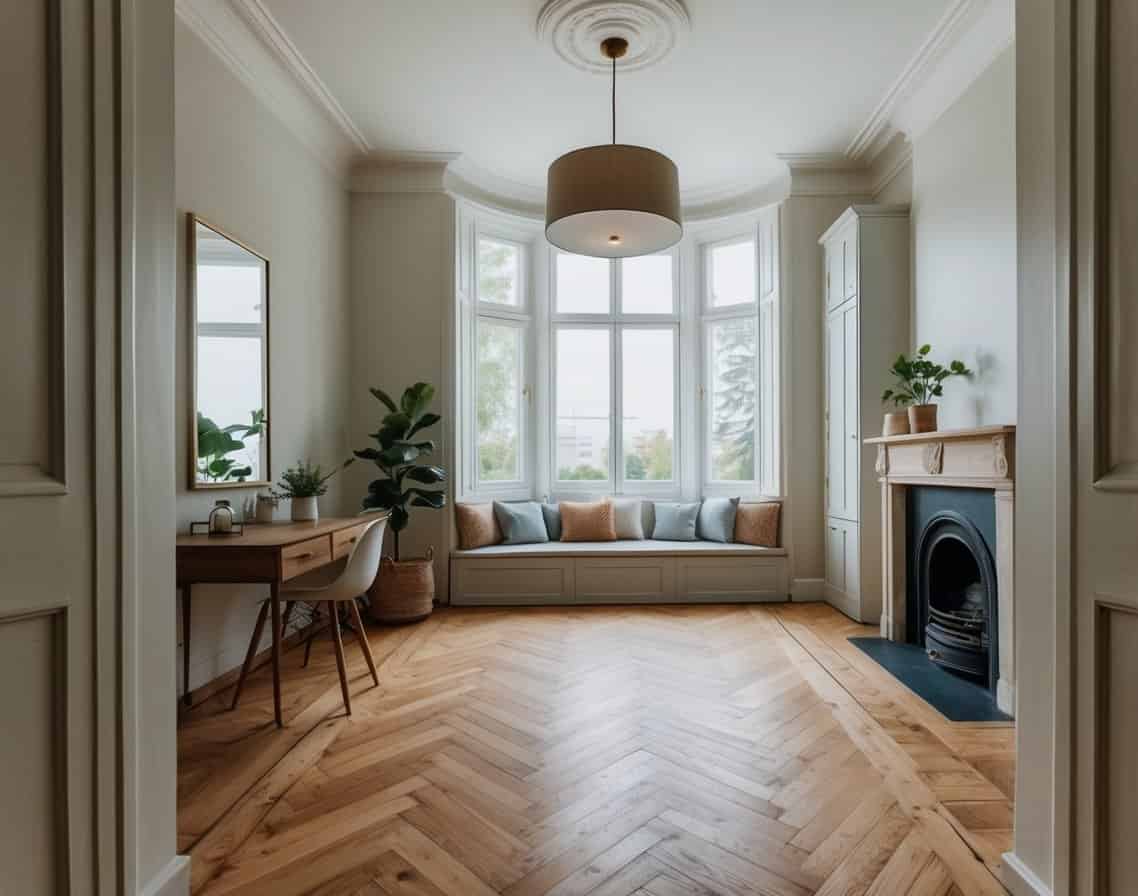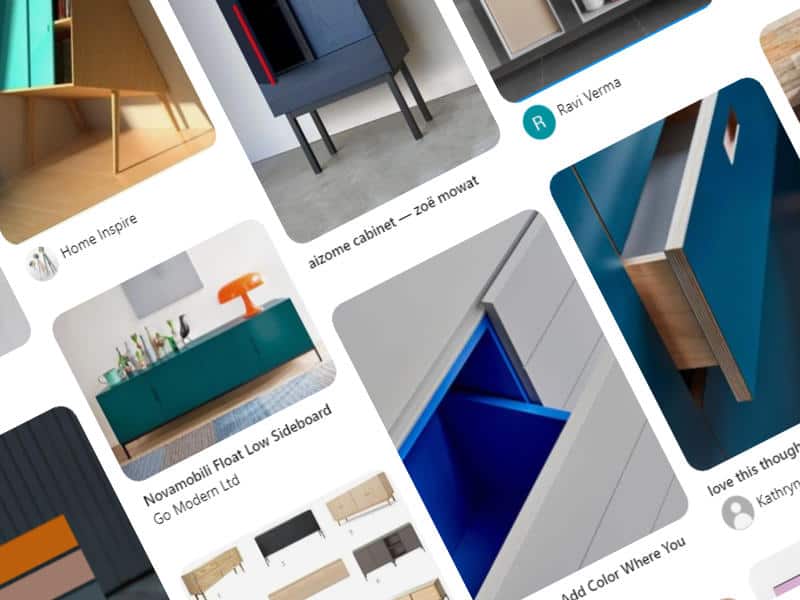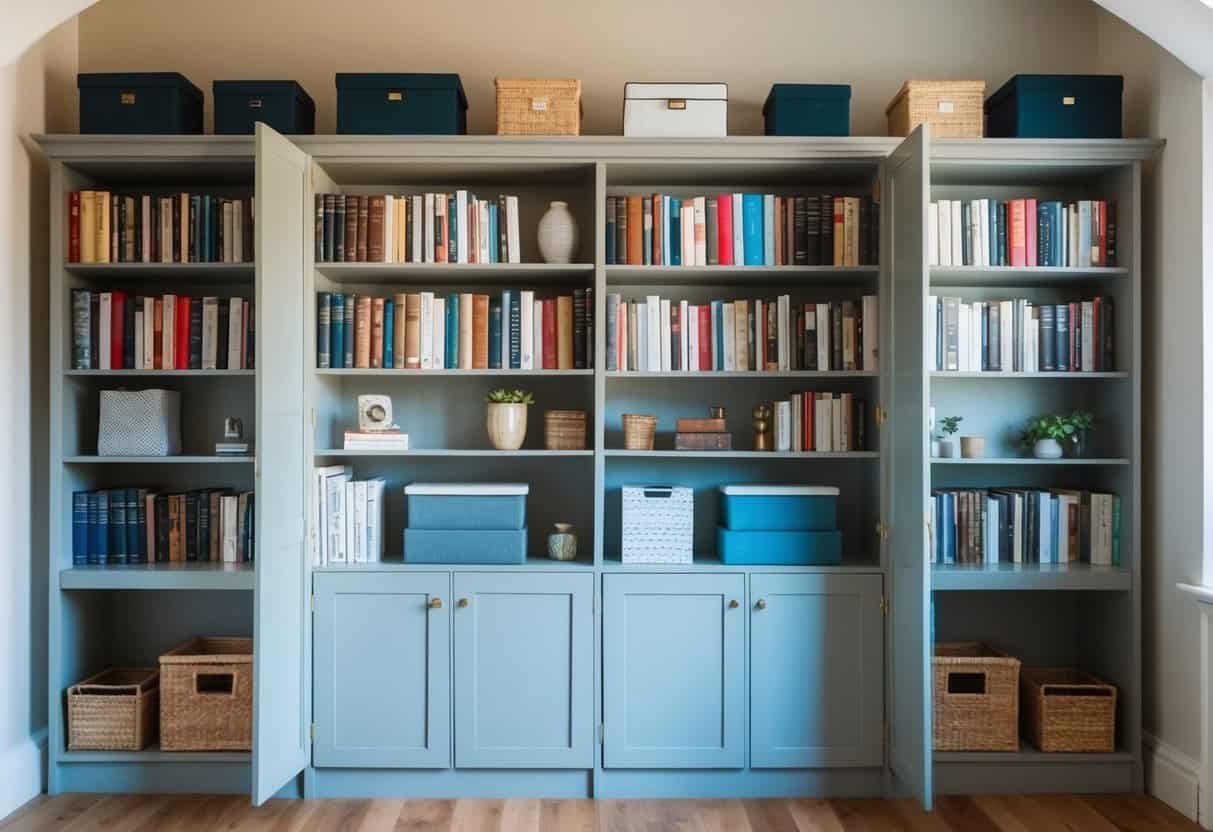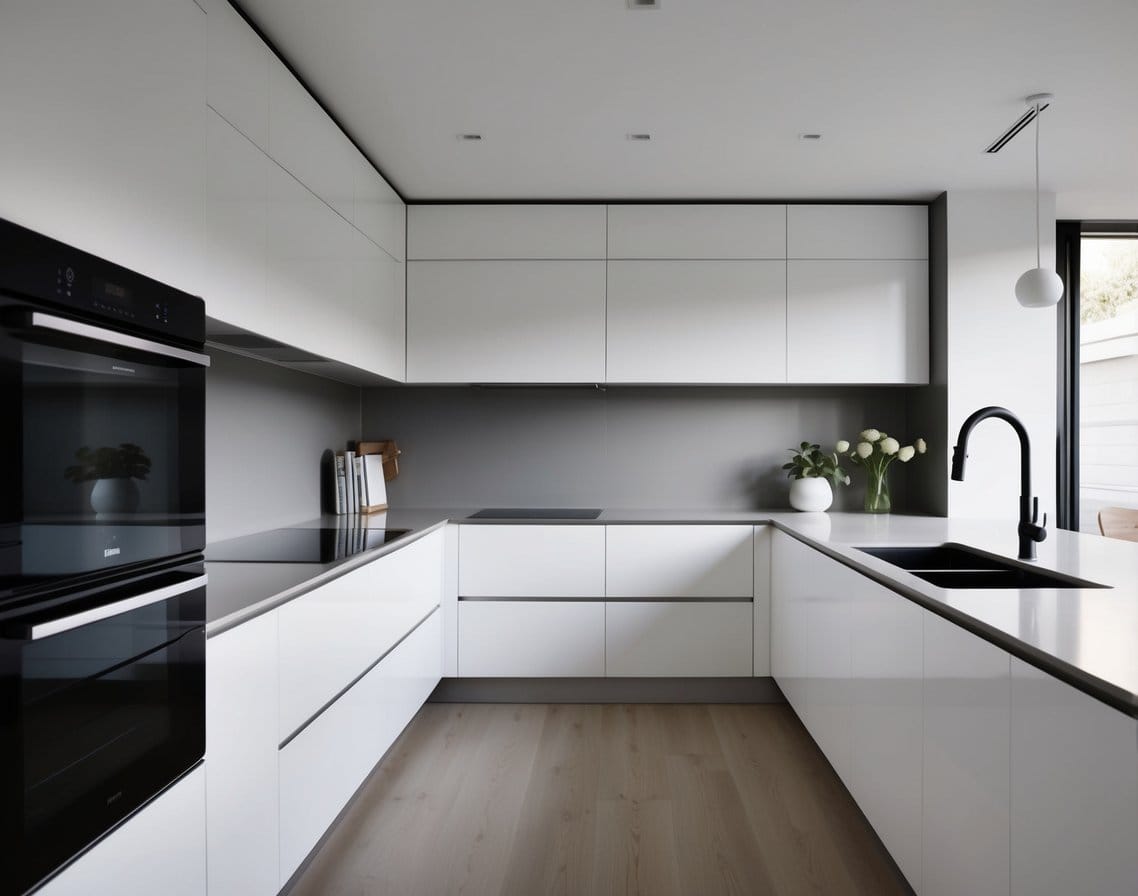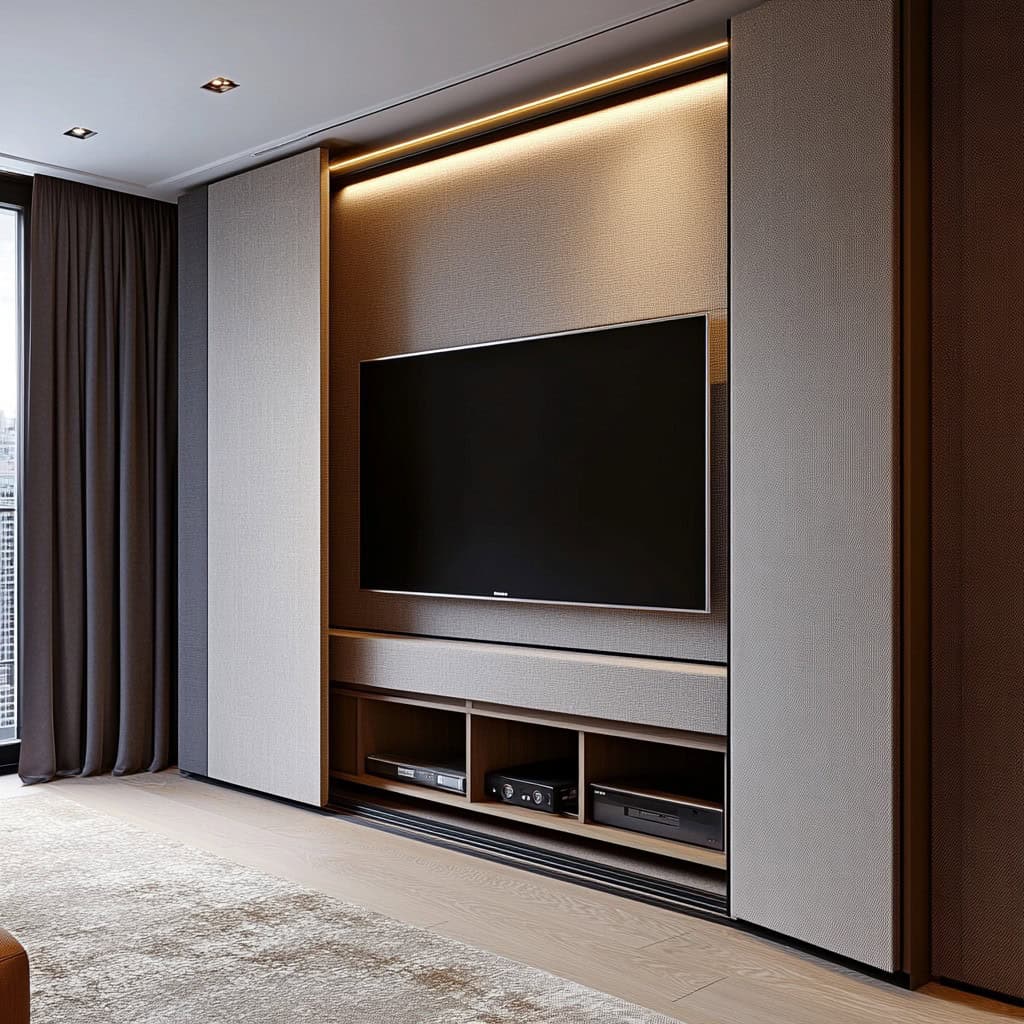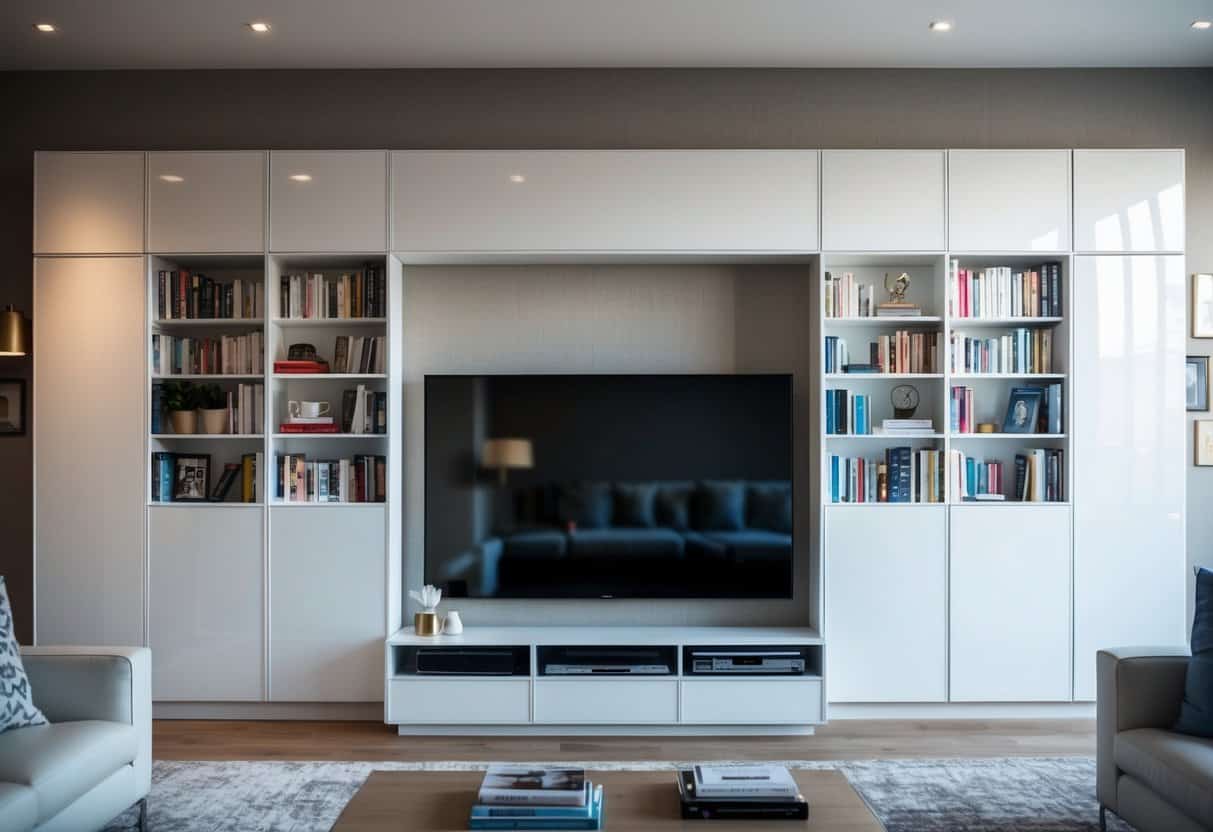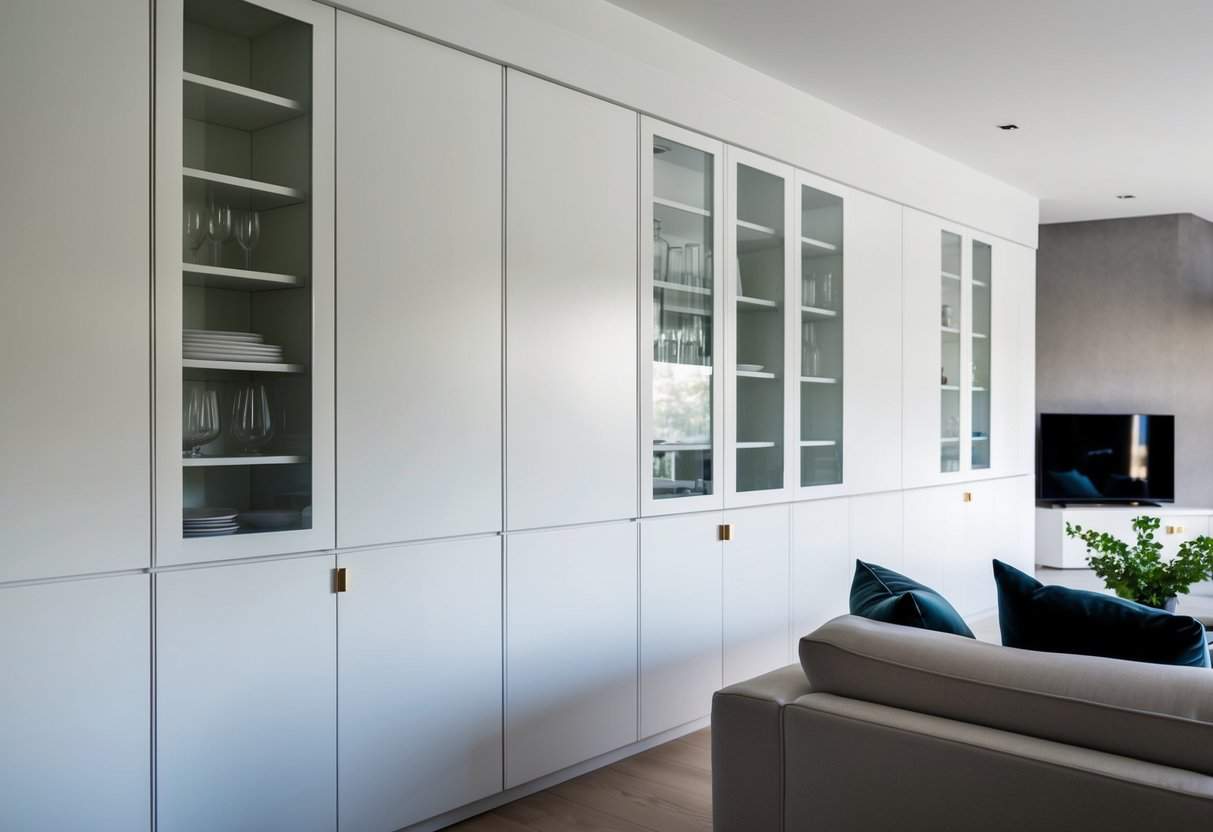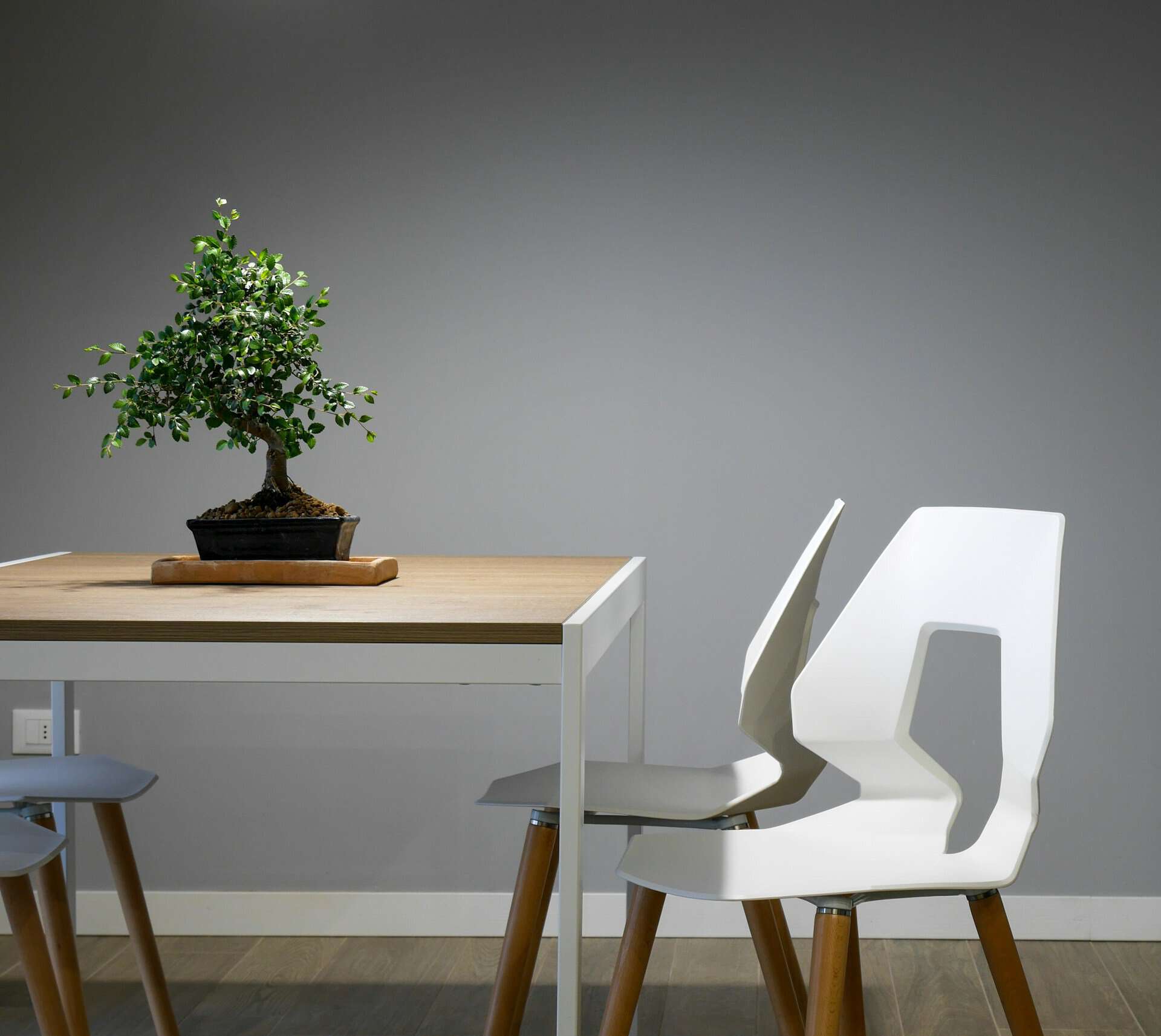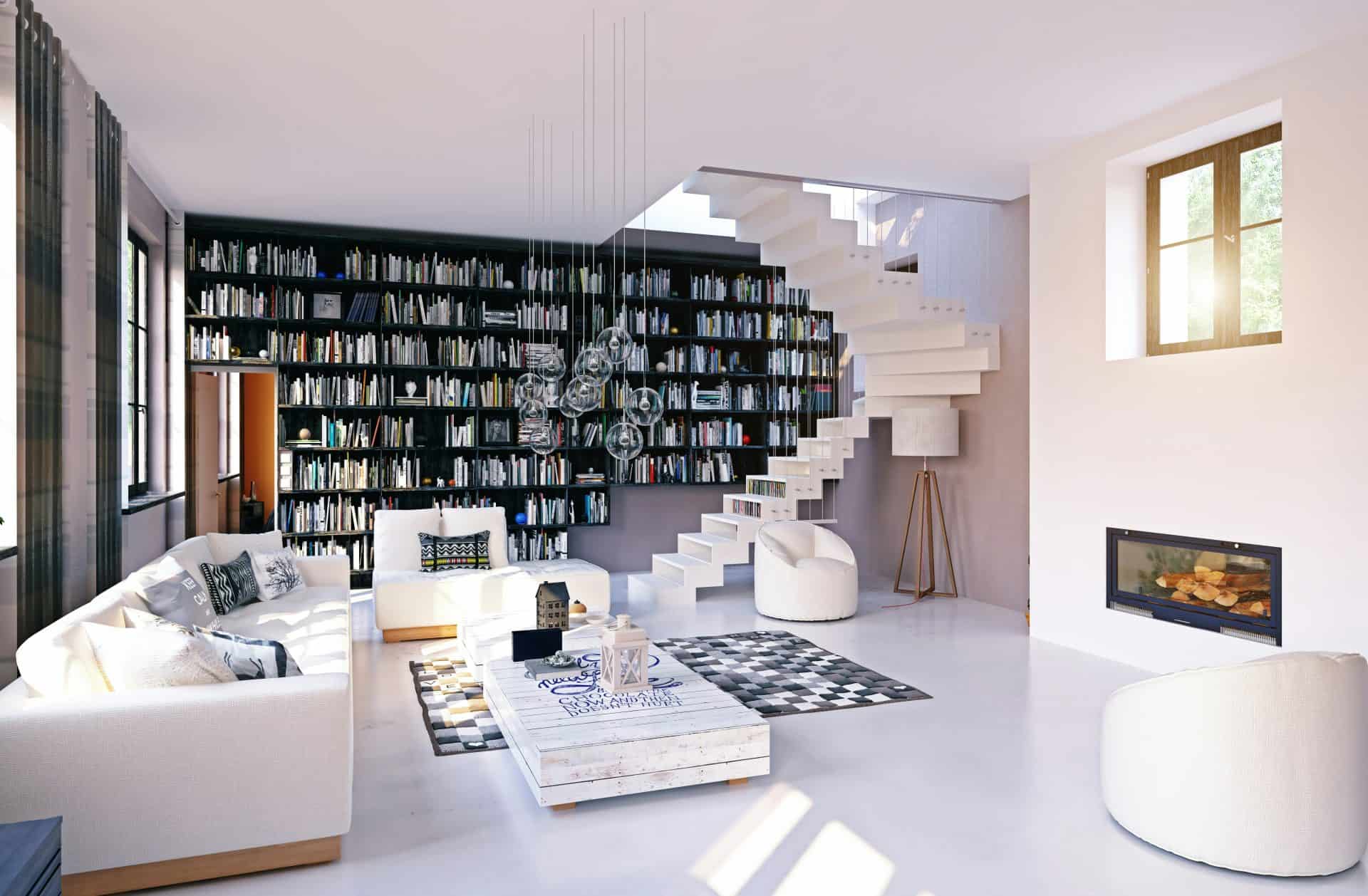Parquet flooring brings timeless beauty and sophistication to any space. These geometric wood patterns create stunning visual interest while providing a durable surface that can last for generations.
Advanced manufacturing techniques combine traditional craftsmanship with modern technology to produce parquet floors that are both beautiful and environmentally responsible.
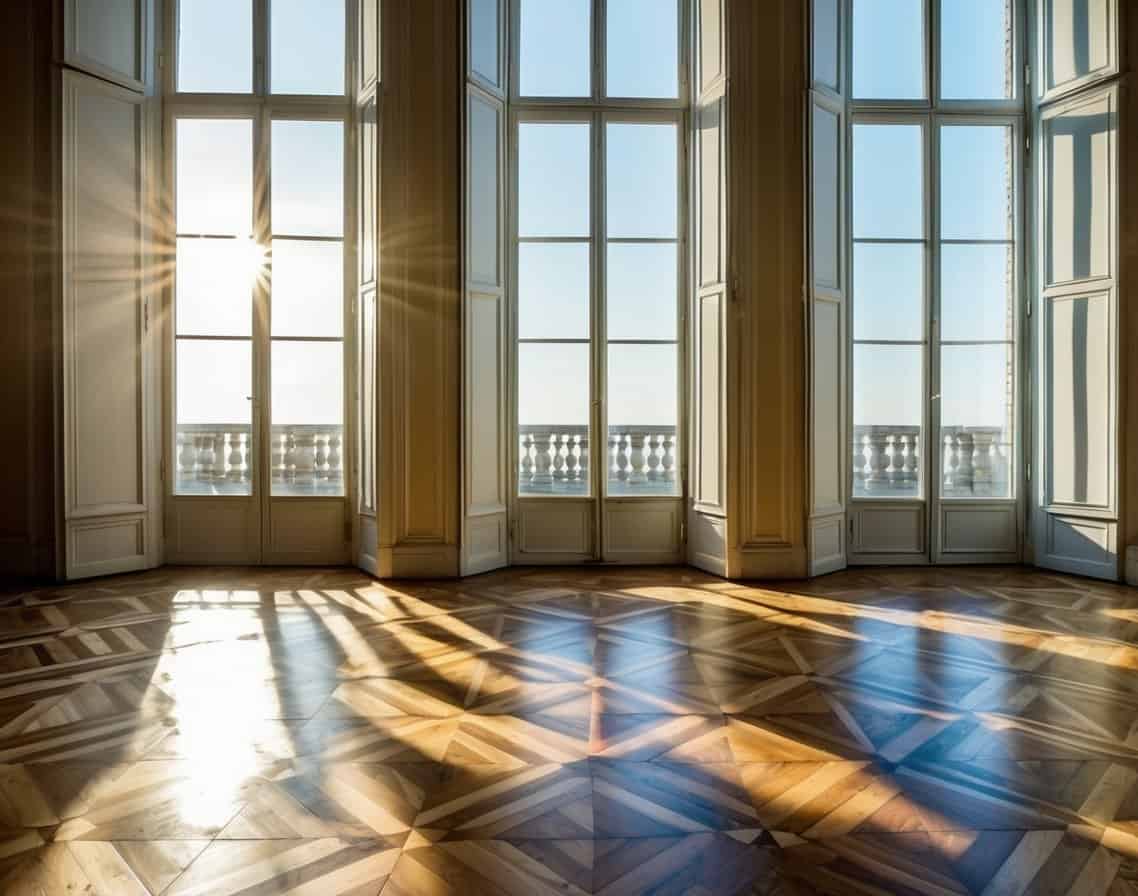
This classic flooring style is making a strong comeback in modern homes. The intricate designs range from simple herringbone to complex geometric patterns that can transform an ordinary room into an architectural showpiece.
Original parquet installations from decades past remain sought-after features in historic homes, demonstrating their enduring appeal and value.
Key Takeaways
Traditional craftsmanship merges with modern technology to create durable, sophisticated flooring patterns
Parquet floors can maintain their beauty for 10-15 years with proper care and maintenance
Sustainable manufacturing processes protect both worker health and environmental impact
History and Craftsmanship of Parquet Flooring
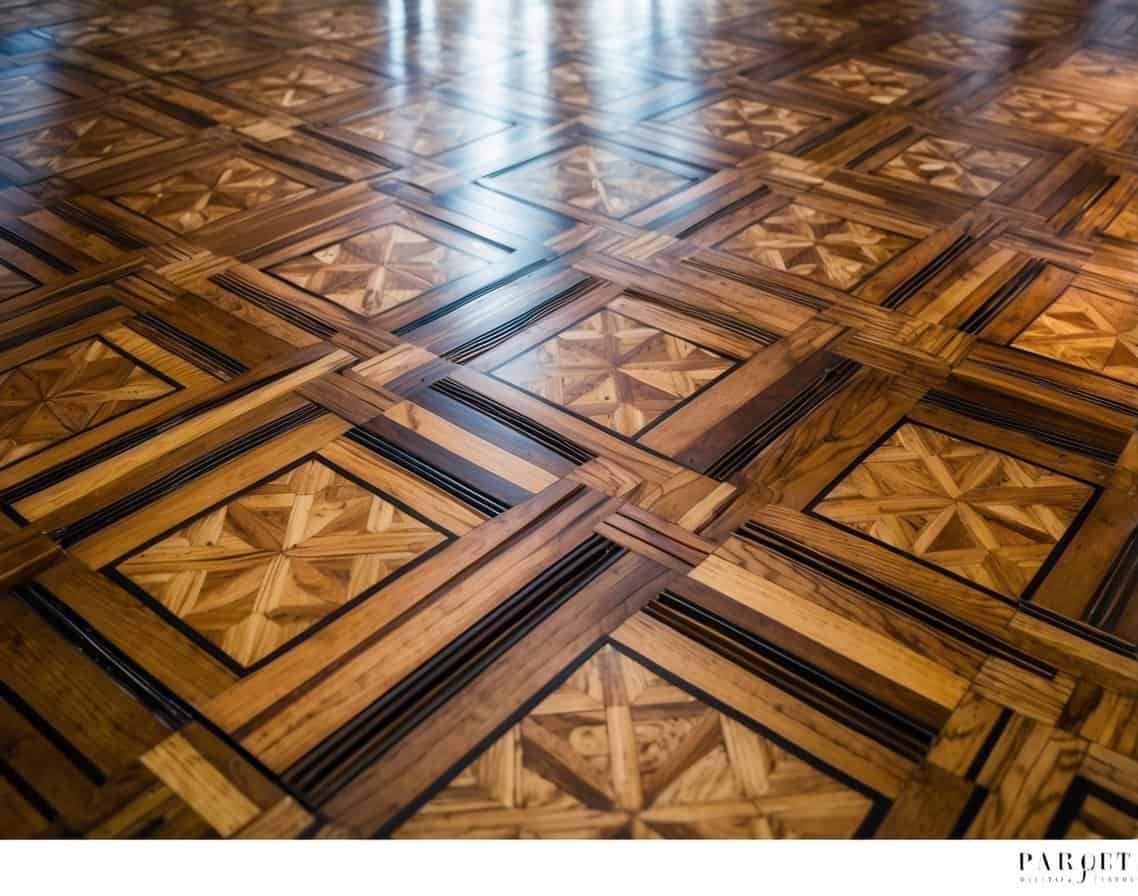
Parquet flooring originating in French palaces represents the perfect blend of artistic vision and skilled woodworking. The craft demands precision, patience, and deep knowledge of wood properties.
Evolution of Parquetry
The story of parquet begins in 16th century France, where it emerged as a beautiful alternative to marble flooring. Palace craftsmen developed intricate geometric patterns using small pieces of wood.
German provinces contributed significantly to parquet development through their exceptional wood craftsmanship traditions. Their techniques spread across Europe in the 17th century.
The Art Deco movement of the 1920s and 1930s brought renewed interest in geometric parquet patterns. This revival showcased bold designs that remain popular today.
Artistry in Parquet Patterns
Traditional parquet combines artistry with technical skill, creating geometric designs from carefully cut wood pieces. Custom parquet options can be tailored to specific requirements, such as unique designs and wood species. Each pattern requires precise measurements and expert installation.
Common patterns include:
Herringbone
Chevron
Basket weave
Versailles
We see the craftsman’s skill in the tight joints and seamless transitions between pieces. Every board must be cut at exact angles to create the distinctive geometric shapes.
Master craftsmen select wood pieces based on grain patterns and color variations to enhance the visual impact of their designs.
Types and Materials
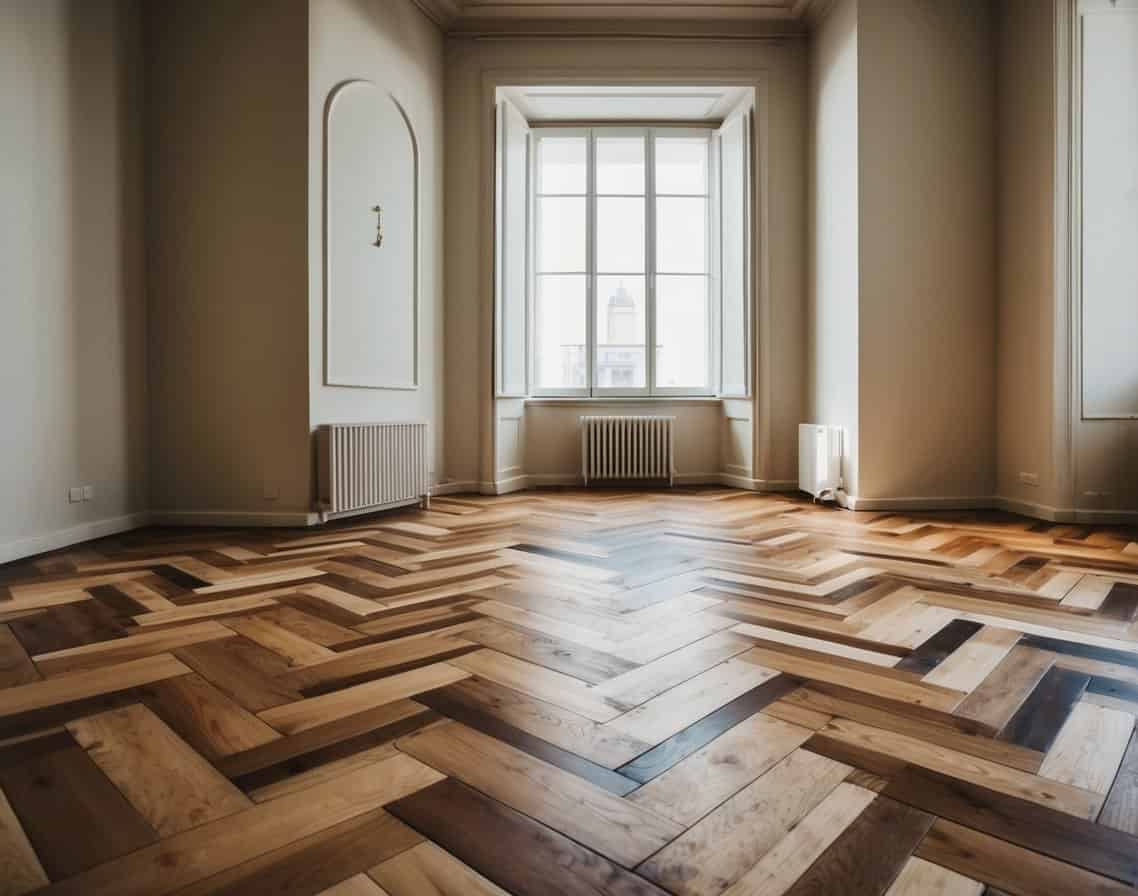
Parquet flooring comes in many wood species and construction types, letting us create stunning geometric patterns for any space. Parquet flooring is constructed from real wood, making it a premium and durable option.
Diverse Wood Species
Parquet flooring uses a wide range of wood species that each bring unique colors and grain patterns. Hardwood floor options, made from solid wood, offer customizable features for both residential and commercial projects, ensuring a perfect fit and unique styles like parquet wood tiles and classic patterns such as herringbone and chevron. Oak remains the most popular choice due to its durability and classic look.
Maple offers exceptional hardness and a light, clean appearance that works well in modern designs.
Walnut brings rich, dark tones and striking grain patterns that create dramatic visual impact in formal spaces.
Exotic woods like teak and mahogany provide distinctive colors and superior moisture resistance, though they typically cost more than domestic species.
Comparing Solid and Engineered Parquet
Traditional solid wood parquet consists of pure hardwood planks arranged in geometric patterns. Each plank is unique and contributes to the overall design. This type can be sanded and refinished multiple times.
Engineered parquet uses a thin hardwood layer bonded to high-quality plywood. It resists moisture better than solid wood and works well over concrete subfloors.
Key Differences:
Solid parquet: 3/4 inch thick, refinishable up to 5 times
Engineered parquet: 3/8 to 1/2 inch thick, refinishable 1-2 times
Solid costs more but lasts longer
Engineered offers better stability in humid conditions
Installation and Compatibility
Proper installation preparation and checking heating system compatibility are essential steps for a successful parquet floor installation that will last for decades.
Preparing for Parquet Flooring Installation
Professional parquet flooring installation requires specific tools and careful preparation. Parquet tiles offer excellent moisture resistance compared to traditional hardwood parquet planks, providing varied options for consumers. We recommend gathering these essential tools:
Measuring tape and spirit level
Pencil and chalk line
Work bench or saw horse
Combination square
Sharp cutting tools
The subfloor must be completely level, clean, and dry before installation begins. We need to check moisture levels carefully – they should be below 2% for concrete subfloors.
Different parquet styles require different preparation approaches. Some come pre-finished and ready to install, while others need sanding and finishing after laying.
Underfloor Heating Considerations
Wood parquet can work with underfloor heating systems, but we must follow specific guidelines. The maximum surface temperature should never exceed 27°C (80.6°F).
The heating system needs to run at a reduced temperature for 7 days before installation. This helps remove any residual moisture from the subfloor.
We recommend using engineered parquet over solid wood when installing over underfloor heating. The engineered construction provides better stability with temperature changes.
The floor heating system must heat evenly across the entire surface to prevent localized wood movement or damage.
Sustainability and Care
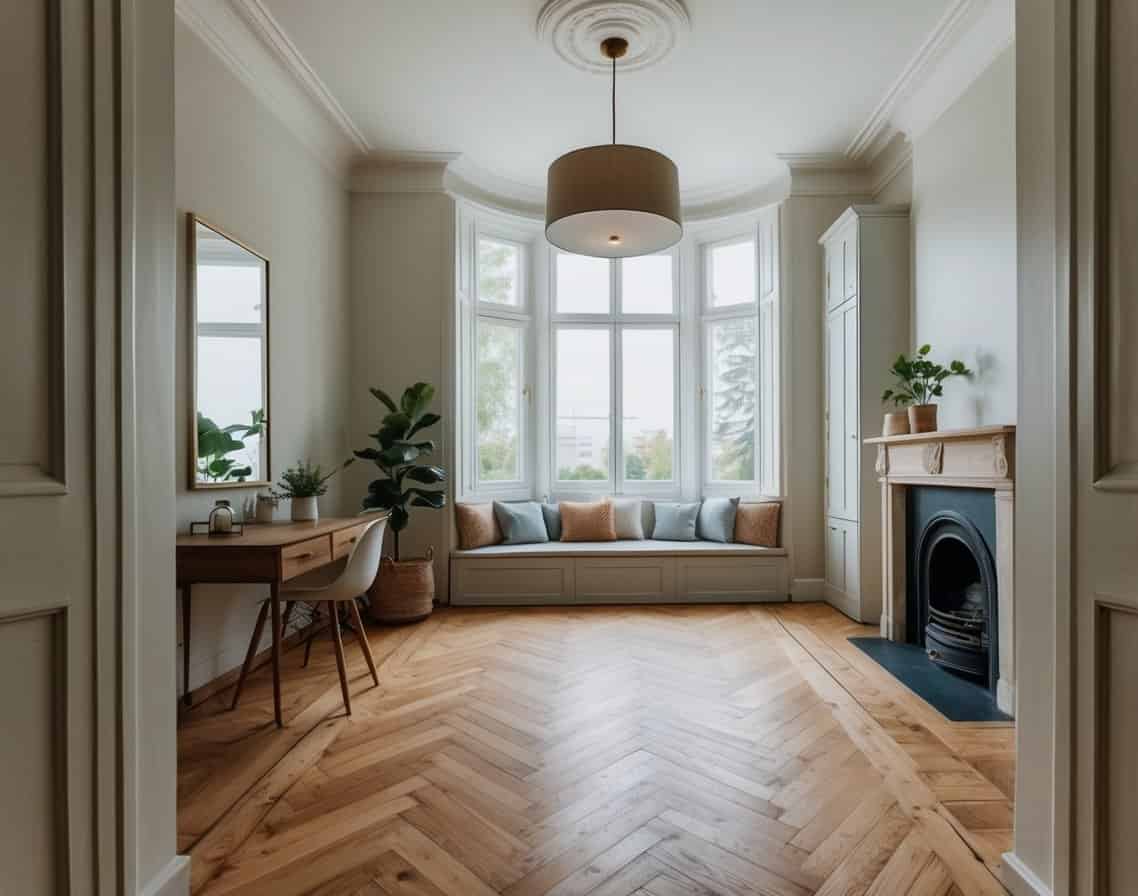
Original parquet flooring stands out as an environmentally responsible choice that maintains its beauty for generations when properly maintained. Hardwood flooring not only enhances the aesthetic appeal of home design but also offers practical benefits. Wood flooring from sustainable sources helps protect forests while providing exceptional durability.
Eco-Friendly Practices
We source wood for sustainable parquet floors from carefully managed forests where new trees replace harvested ones. This cycle ensures continuous forest regeneration.
High-quality sustainable materials resist wear better than conventional alternatives. The natural wood requires no harmful chemicals during production.
We use every part of the harvested trees, turning smaller pieces into parquet patterns and remaining wood into biofuel. This zero-waste approach maximizes each tree’s value.
Maintenance and Longevity
Regular cleaning with a dry mop or vacuum keeps dirt from scratching the surface.
A slightly damp cloth works well for occasional deeper cleaning.
We recommend applying wood floor cleaner every 2-3 months to maintain the protective finish.
Felt pads under furniture prevent scratches.
Professional maintenance can restore the floor’s appearance after years of use.
Sanding and refinishing can be done multiple times, extending the life of parquet floors by decades.

